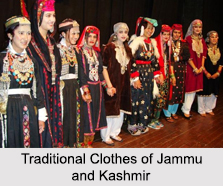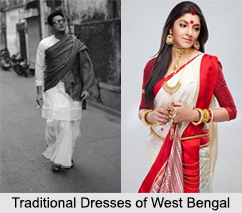Introduction
Dadra and Nagar Haveli, a union territory in western India, comprises two distinct areas namely- Nagar Haveli, situated between Maharashtra and Gujarat, and Dadra, an enclave about one kilometer to the northwest, entirely surrounded by Gujarat. Silvassa serves as their shared capital. Once under Maratha rule, the territory carries a rich historical legacy and a vibrant cultural identity. More than half of the region’s population belongs to various tribal communities. Among them are the Warlis, Koli, Kokna, Dhodia, Dubla, Naika, and Kathodi, each with unique customs, traditions, and cultural practices that contribute to the area’s diversity. This diversity in culture is reflected in their attire which is rooted in ethnic culture.
Traditional Dress of Warli Community
While the Warli community is often associated with Maharashtra and is also present in Gujarat, they regard the Union Territory of Dadra and Nagar Haveli as their ancestral homeland. Speaking an Indo-Aryan language closely related to Marathi and Konkani, the Warlis form the largest tribal group in the region, accounting for about 63% of its total tribal population.
The costume of the men of Warlis origin comprises of a loin-cloth , a waist-long coat, and a headgear, that is a turban. The Warli women, wrap themselves round the waist in Lugden (a one-yard sari), reaching down till the knee and another piece of cloth called Padar. Women love to deck themselves in silver and white ornaments.
Traditional Dress of Dhodia Community
The Dhodias, primarily hut dwellers, inhabit the northern part of Dadra and Nagar Haveli. Recognized as the most educated among the tribal communities of the region, they are also regarded as skilled cultivators. Dhodia men, cover themselves in a white knee-length Dhoti, topped off by a shirt or a waistcoat. They like to cover their heads with a white or colourful cap called Varli. Dhodia men are inclined towards wearing ornaments, such as earrings and silver chains, encircling the waist.
The traditional costume of the Dodhia women, on the other hand, is a dark blue saree, stretching upto the knees, and with the aanchal or pallu, enveloping the front portion of the body. Beads necklaces of resplendent hues, metal bangles on wrists and dainty metal Kadas (a kind of anklet) round the ankles, augment the natural beauty of the women of this tribe.
Traditional Dress of Kokna Community
The Koknas trace their name to the Konkan region of western India. Owning land and cultivating paddy, they are considered more proficient farmers than the Warlis. With the spread of formal education, many Koknas have advanced socially and improved their standing within the community.
The costume of the Koknas, is much akin to that of the other tribes. The sturdy Kokna men, don themselves in Dhoti, coming down till the knees, a waist coat or shirt. A turban furnishes a Kokna man with dignity. Kokna women flaunt themselves in sarees of myriad colours, either knee-long or toe-long. An additional adornment catered by the Kokna men and women is a tattoo-painting, on the forehead and on other parts of the body.
Traditional Dress of Kathodia Community
The Kathodis, known as Katkari in Maharashtra’s Thane district, constitute just 0.08% of the tribal population in Dadra and Nagar Haveli. Their name originates from their traditional occupation of preparing kattha (catechu). Regarded as being at the lower end of the tribal social hierarchy, they typically reside in forested areas within semi-permanent settlements.
Kathodi or Katkari women traditionally wear a chaniya or skirt with a blouse, while some also drape a phadaki or sari in the Maharashtrian style. Men typically wear traditional lower garments and, in earlier times, kept their heads shaved while maintaining a sparse beard.
It is wonderful to watch that the costumes of Dadar and Nagar Haveli has a simple as well as aesthetic complexion.





















